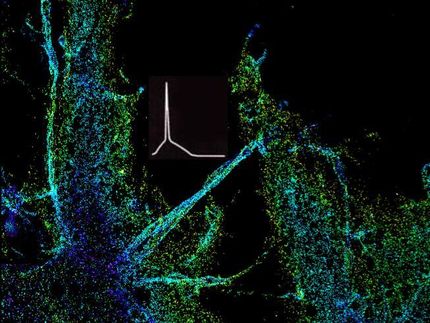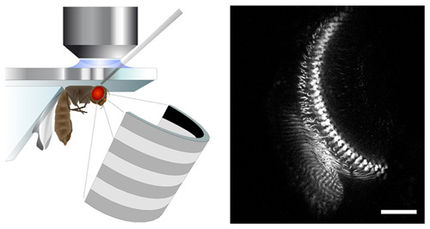Jülich researchers contribute to "Human Brain Project"
EU provides funding for simulation of human brain
Advertisement
To understand the human brain using simulation – that’s the vision of the Human Brain Project (HBP). In order to make it a reality, researchers from 23 countries are working together to build a unique infrastructure that will allow them to establish and further develop a brain research and information technology network. The European Union has now decided to support this plan as part of its FET Flagship Initiative. Jülich scientists will contribute their expertise primarily in the areas of structure and function of the brain, as well as supercomputing and simulation.

JUQUEEN
Forschungszentrum Jülich
"I congratulate the involved scientists at Forschungszentrum Jülich on this success. Jülich, which is home to the fastest supercomputer in Europe, provides excellent conditions for international researchers to make this flagship project a reality. At the same time, the Human Brain Project is also an honour for the whole of Germany as a location for supercomputing," said Thomas Rachel, parliamentary state secretary in the Federal Ministry of Education and Research (BMBF), when the decision was announced.
Neuroscientists, physicians, computer scientists, physicists, mathematicians, and computer specialists from more than 80 internationally respected scientific institutions in 23 countries are now collaborating to make this happen. They are looking at the task from a variety of different perspectives: from neuroscience, genetics, supercomputing, information technology and robotics up to sociological and ethical issues. Within the next ten years, they intend to simulate the human brain as a whole on a supercomputer of the future in as much detail as possible, from the individual cell to the interaction of large cell clusters and areas of the brain. Among their objectives is a better understanding of the brain, which will allow them to diagnose diseases earlier and treat them more effectively.
Forschungszentrum Jülich and its regional research partners – the Jülich Aachen Research Alliance (JARA), the universities of Düsseldorf and Wuppertal, and the German Research School for Simulation Sciences – will all be involved in different research priorities within the Human Brain Project.
Jülich’s know-how and infrastructure in the field of supercomputing will make a major contribution to the project. However, today’s supercomputers do not possess sufficient capacity to process the vast volume of data on the human control centre that is available worldwide or prepare it for computer simulation. Experts from the Jülich Supercomputing Centre (JSC), together with cooperation partners, are developing a new generation of exaflop computers and suitable software. "The Human Brain Project will enable information technology to make a giant leap forward," says Prof. Thomas Lippert, head of JSC. As part of the Human Brain Project, he is also responsible for supercomputing and the future Human Brain supercomputer, which will be installed at the Jülich Supercomputing Centre by 2020. "We will develop faster and more powerful computers in order to simulate increasingly detailed models of the brain. New findings on the function of the brain will in turn open up new perspectives in data processing."
Scientists at Forschungszentrum Jülich’s Institute of Neuroscience and Medicine (INM) provide important fundamental neurobiological information, for example about the structure of individual neurons, entire neuron clusters, and larger networks, and about the way they work. "We are creating a virtual human brain that covers the spatial organization of the brain from the molecular level right up to the complex system of functions. This multimodal brain map will be the navigation system in the Human Brain Project," says Prof. Katrin Amunts, who is a director at INM and also heads a subproject of the Human Brain Project that is concerned with the multilevel organization of the human brain.
Prof. Markus Diesmann, also a director at INM in Jülich, works on the interface between medical research and simulation technology: "We investigate processes in the brain, for example by developing simplified models of neurons and simulating their activity and communication with each other. By comparing our results with experimental data, we can then progressively refine our models until they closely resemble the real network of the brain."
The goal of the FET Flagship is to open doors for new technologies. The project partners believe that this will be the case with the Human Brain Project. The virtual model of the brain will in future make it easier for physicians to understand the structure and function of the healthy and diseased brain, and enable new drugs to be developed and tested. The fields of robotics and neuromorphic computing also stand to benefit from brain simulation. In addition, it can serve as a model for extremely powerful and energy-efficient computers of the future. After all, the brain transmits and processes highly complex information while at the same time requiring less energy than a 60-watt incandescent bulb.



























































